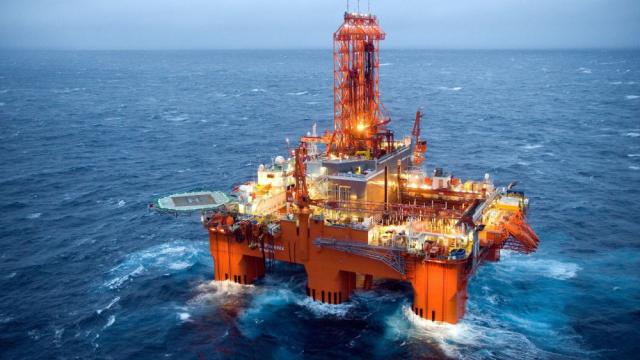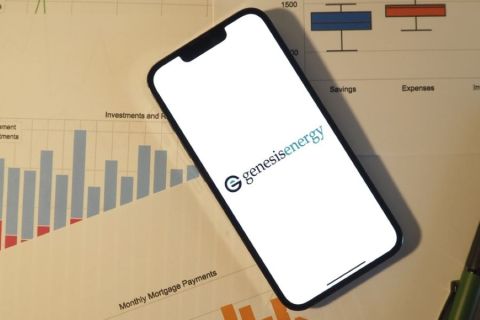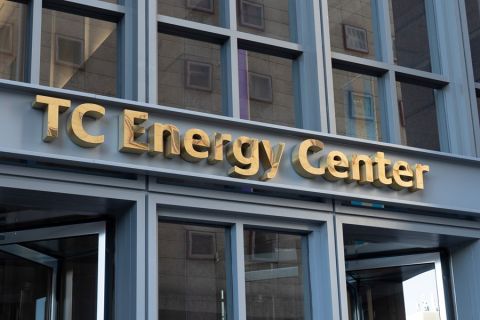
The well, located about 20 km south of the Kristin platform, was drilled by the West Phoenix rig in production license 199. (Source: Seadrill)
Equinor said Jan. 16 the Ragnfrid North (6406/2-9 S) exploration well discovered gas and condensate in the Norwegian Sea.
Recoverable resources are estimated at between 6 million barrels of oil equivalent (MMboe) and 25 MMboe, the company said.
The well’s primary exploration target was to prove petroleum in Middle to Lower Jurassic reservoir rocks in the Garn and Ile formation and in the Tofte formation, respectively, according to the Norwegian Petroleum Directorate (NPD). The secondary exploration target was to prove petroleum in Upper Cretaceous reservoir rocks—the Lange formation—and in the Lower Jurassic—the Tilje Formation—if a discovery was made in the overlying Tofte Formation.
In the primary exploration target, the well encountered a gas and condensate column of about 10 m in the Tofte Formation with moderate reservoir properties. The entire Tofte formation totals about 140 m. This includes 120 m of effective reservoir rocks with sandstone of poor to moderate reservoir quality, the NPD said in a separate news release. The Garn and Ile formation came in at about 85 m and 70 m respectively, with effective reservoir rocks of 75 m and 65 m and mainly poor to moderate reservoir quality. Both formations are aquiferous.
The NPD said the well encountered several 1- to 5-m thin gas-bearing sandstone layers, with poor reservoir quality, in the secondary exploration target in the Lange formation. The uppermost layer has a 3-m gas column. The upper part of the Tilje Formation is about 105 m, including 75 m of effective reservoir rocks with aquiferous sandstones, mainly with poor reservoir quality.
The well, located about 20 km south of the Kristin platform, was drilled by the West Phoenix rig in production license 199.
“Exploring for resources close to existing infrastructure is a central part of Equinor’s strategy to further develop the Norwegian Continental Shelf (NCS). We need this kind of discoveries in the years to come,” Nick Ashton, Equinor’s senior vice president for Norway and the UK, said in the company's release. “Ragnfrid North will, together with the former discoveries Lavrans and Erlend East, give a more detailed picture of the potential in this area of the Norwegian Sea.”
With a 27% interest, Equinor is the operator. Partners are Petoro (27%), Exxon Mobil (15%) and Total (6%). Next steps are for the partners to evaluate the discovery for development and tie-in to the Kristin Field and further maturing of the Kristin South project, Equinor said.
The rig is now being moved to the U.K. Continental Shelf to drill the Equinor-operated Bigfoot prospect south of the Mariner Field.
Recommended Reading
Genesis Energy Declares Quarterly Dividend
2024-04-11 - Genesis Energy declared a quarterly distribution for the quarter ended March 31 for both common and preferred units.
TC Energy Appoints Sean O’Donnell as Executive VP, CFO
2024-04-03 - Prior to joining TC Energy, O’Donnell worked with Quantum Capital Group for 13 years as an operating partner and served on the firm’s investment committee.
Chord Energy Updates Executive Leadership Team
2024-03-07 - Chord Energy announced Michael Lou, Shannon Kinney and Richard Robuck have all been promoted to executive vice president, among other positions.
Moda Midstream II Receives Financial Commitment for Next Round of Development
2024-03-20 - Kingwood, Texas-based Moda Midstream II announced on March 20 that it received an equity commitment from EnCap Flatrock Midstream.
Humble Midstream II, Quantum Capital Form Partnership for Infrastructure Projects
2024-01-30 - Humble Midstream II Partners and Quantum Capital Group’s partnership will promote a focus on energy transition infrastructure.





